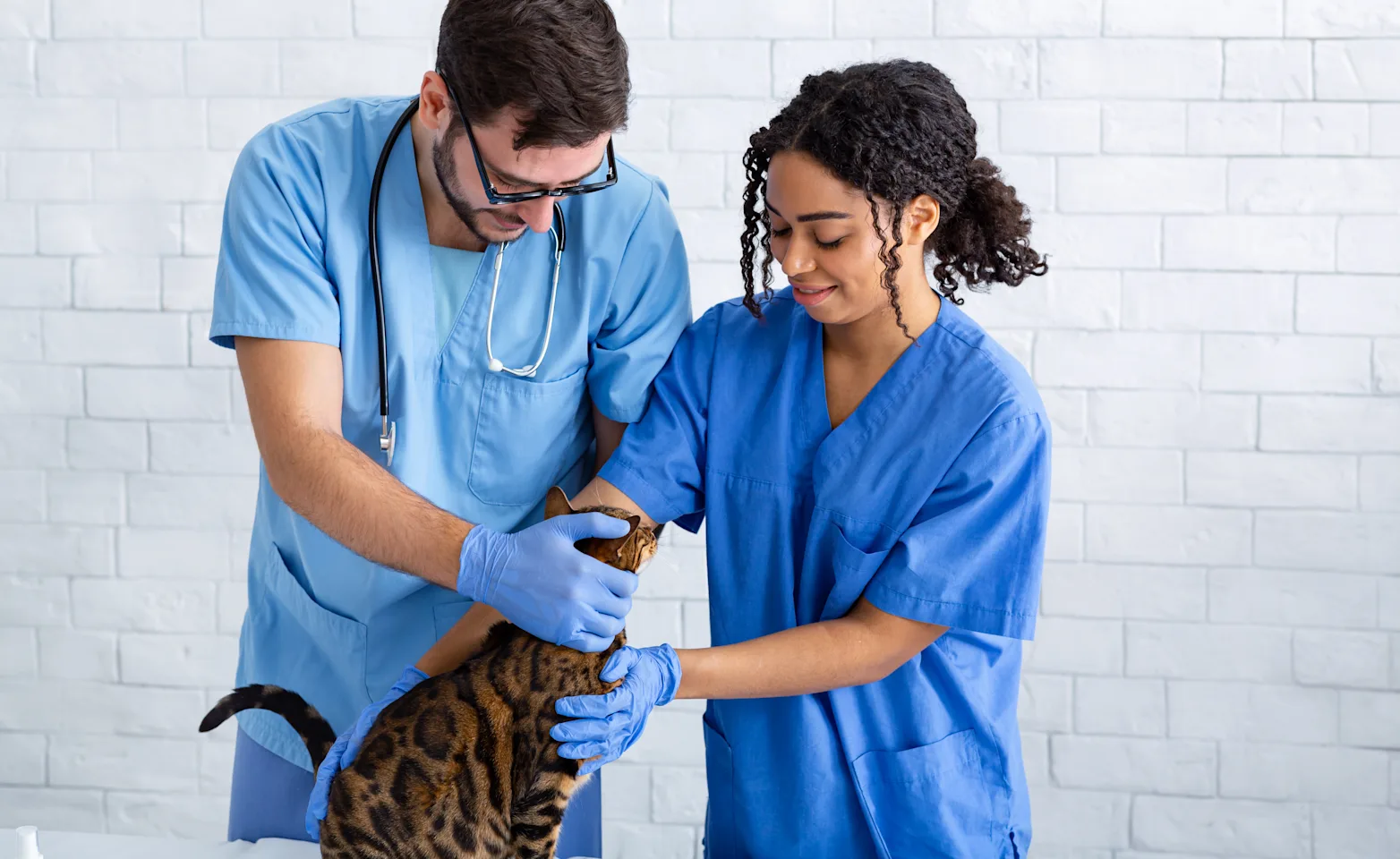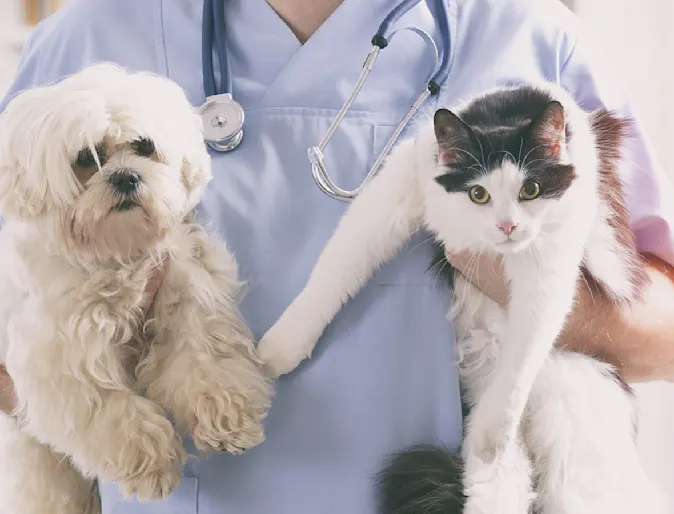Signs Your Dog Might Need canine tplo surgery: Vet-Approved Checklist
Signs Your Dog Might Need canine tplo surgery: Vet-Approved Checklist
Blog Article
Everything About Vet Surgical Treatment: Recognizing the Importance of Specialist Care for Your Animals
Vet surgical procedure is an essential element of pet dog health care. It incorporates various procedures, from routine elective surgical procedures to urgent interventions. Recognizing the intricacies of these surgical treatments can assist pet owners make notified decisions. The preparation, execution, and recuperation stages are important for ensuring the well-being of animals. With correct understanding, proprietors can browse the intricacies of vet treatment. What elements should be considered before a pet undergoes surgery?
Sorts Of Veterinarian Surgeries
When a pet dog needs surgical intervention, understanding the various kinds of veterinarian surgical procedures can help pet dog owners make educated decisions. Veterinary surgical procedures can be generally classified right into 3 primary kinds: optional, urgent, and emergency surgical treatments. Optional surgeries, such as spaying or neutering, are prepared treatments that are not instantly dangerous. Immediate surgical treatments, like those for foreign body elimination, have to be performed soon but are not serious in the moment. Emergency situation surgical procedures, such as those attending to severe injury or internal blood loss, are essential and need instant attention.Additionally, surgical treatments can vary in intricacy, ranging from minimally invasive laparoscopic treatments to a lot more extensive open surgical treatments. Each kind of surgical treatment carries its own dangers and recovery procedures. Comprehending these classifications permits pet owners to involve in meaningful conversations with veterinarians, causing much better outcomes for their cherished family pets.
Preparing for Your Animal's Surgical treatment
Planning for a pet dog's surgery involves a thorough checklist to assure all basics are covered. Efficient interaction with the vet is crucial for recognizing the treatment and any type of required pre-operative actions - animal emergency care bellingham. In addition, having clear post-operative treatment guidelines will assist owners provide the best assistance for their recuperating pet dogs
Pre-Surgery Checklist Fundamentals
Ensuring a smooth medical experience for a pet needs cautious prep work and attention to information. A pre-surgery list is important for family pet owners to follow. First, verifying the set up surgical procedure day and time is vital. Owners need to additionally verify that their pet dog has actually fasted according to the veterinarian's directions, typically for 8-12 hours prior to surgical procedure. Collecting essential clinical documents, consisting of vaccination background, is necessary for the veterinarian's review. It is additionally advisable to prepare a comfy area at home for the pet dog's recovery after surgical procedure. Owners need to have a strategy for transportation to and from the vet clinic, making sure that the family pet is protected and comfortable throughout the trip. Following these actions can considerably enhance the medical experience.
Interacting With Your Vet

Efficient communication with the vet is crucial for an effective surgical experience for pets. Proprietors ought to be prepared to review their pet dog's case history, including any type of pre-existing problems, drugs, and allergies. This information assists the vet evaluate risks and tailor the surgical plan accordingly. Additionally, pet owners ought to ask inquiries pertaining to the procedure, anesthesia, and anticipated end results to guarantee they totally comprehend the procedure. Making clear any kind of doubts can ease anxiousness for both the family pet and the proprietor. It is likewise crucial to connect any type of behavior changes or problems observed in the family pet leading up to the surgical procedure. Eventually, clear dialogue promotes trust fund and collaboration, making sure that family pets receive the best feasible treatment during their medical journey.
Post-Operative Care Directions
After discussing the procedure with the veterinarian, pet dog owners need to concentrate on post-operative care guidelines to assist in a smooth recuperation for their pet dogs. These directions usually consist of keeping track of the medical website for indications of infection, such as redness or discharge. Animals may need to be kept tranquil and constrained to avoid too much motion that could interrupt recovery. Pain monitoring is crucial, so proprietors need to comply with the veterinarian's assistance on administering medicines. Additionally, dietary limitations may be advised to prevent intestinal distress. Regular follow-up visits are crucial to assure correct recovery and resolve any kind of worries. By sticking to these post-operative treatment directions, family pet proprietors can significantly add to their pet's recovery and total health.
The Surgical Process Explained
The surgery for family pets encompasses crucial steps that guarantee their safety and recovery. Pre-surgery prep work are crucial for reducing risks, while post-operative treatment guidelines play a crucial role in promoting recovery. Recognizing these parts assists family pet owners navigate the medical experience more properly.
Pre-Surgery Preparations
Prior to a pet undergoes surgical treatment, several crucial prep work have to occur to assure a secure and effective treatment. First, a complete veterinary assessment is important to evaluate the animal's total health and identify any kind of prospective threats. This may include blood examinations, imaging, or other diagnostics. The vet will likewise review anesthetic options tailored to the pet dog's certain demands. In addition, animal owners are normally instructed to keep food and water for a defined time prior to surgery to minimize the danger of problems throughout anesthesia. It is essential for owners to offer a complete case history, consisting of any type of medications or allergic reactions, making sure the medical group has all necessary information. Correct communication and adherence to pre-surgery standards can considerably enhance the outcome of the treatment.
Post-Operative Care Guidelines
Appropriate post-operative care is important for ensuring a family pet's healing adhering to surgery. After the procedure, pet dogs must be kept track of carefully for any kind of indicators of issues, such veterinary medicine degree as too much bleeding, swelling, or uncommon behavior. It is essential to comply with the veterinarian's directions concerning drugs, consisting of pain reducers and anti-biotics. Animals must be kept in a silent, comfy environment to reduce tension and promote healing. Limiting task is important; short, leashed walks may be necessary, yet leaping or running need to be stayed clear of. Regular follow-up visits must be arranged to examine the recovery process. In addition, the surgical website needs to be maintained tidy and dry, with any kind of indicators of infection reported to a vet quickly. Complying with these guidelines improves recuperation results.
Anesthesia and Discomfort Management
Effective anesthetic and pain administration are necessary elements of veterinary surgical treatment, making sure that family pets remain comfy and risk-free throughout the procedure. Veterinarians assess each pet dog's private requirements, considering aspects such as age, weight, health standing, and the kind of surgical treatment being performed.Anesthesia procedures commonly consist of a mix of pre-anesthetic medications, induction representatives, and inhalant anesthetics, enabling precise control over the pet's level of consciousness. Surveillance throughout surgery is vital; veterinarians continuously observe vital indicators to address any possible difficulties promptly.Pain monitoring methods might involve opioids, non-steroidal anti-inflammatory medications (NSAIDs), and local anesthetics, customized to the pet dog's details circumstance. This complex strategy helps minimize discomfort and advertises a smoother surgical experience. By prioritizing efficient anesthetic get more and discomfort management, veterinary professionals enhance the overall welfare of animals going through operations, guaranteeing they receive the greatest standard of care.
Post-Operative Treatment and Recuperation
Complying with surgery, the emphasis changes to post-operative treatment and recuperation, which is important for making certain a family pet's risk-free go back to normal tasks. During this duration, animals need a peaceful, comfy setting to aid healing. Owners must closely check their pet dogs for any indications of pain or unusual behavior.Veterinary standards commonly include details directions connected to drug administration, wound treatment, and nutritional adjustments. It is important to stick to these recommendations to lessen problems and promote recovery. Pets might require to be limited from energetic activities, such as running or jumping, during their healing period (emergency vet).Regular follow-up consultations with the veterinarian permit for tracking of the pet dog's development and prompt changes to the care plan. Giving emotional support and companionship can also enhance an animal's healing experience, assisting to ease tension and anxiety. Overall, thorough post-operative care plays a considerable duty in accomplishing an effective healing
Identifying Issues After Surgical Treatment
Just how can family pet proprietors recognize complications after surgical treatment? Recognition of details indicators is necessary for making sure the health of family pets throughout recuperation. Typical indications consist of important source excessive swelling, redness, or discharge at the surgical site, which might represent infection. Additionally, relentless pain, shown by yawping or reluctance to relocate, should prompt instant interest. Changes in hunger or water consumption can also show complications; a reduction in these habits might signal pain or distress.Moreover, pet dog owners ought to check their animals for any unusual habits, such as sleepiness or problem breathing, as these can be signs of serious issues. Vomiting or looseness of the bowels complying with surgery might call for immediate vet evaluation. Recognizing these problems early can considerably influence an animal's recuperation procedure, stressing the value of caution and punctual interaction with a veterinarian for any worrying signs.
The Function of Vet Professionals in Surgical Care
Veterinary professionals play a crucial role in making certain the security and success of surgeries for pet dogs, especially following surgical treatment when checking and treatment are critical. These experts include veterinarians, veterinary professionals, and assistance staff, every one of whom contribute specialized skills to the surgical process.Before surgical treatment, vets perform detailed assessments to examine the pet dog's wellness, making certain that any kind of hidden problems are taken care of. Throughout the treatment, the medical team provides anesthetic, maintains sterilized environments, and keeps track of vital indications, very important for reducing risks.Post-operative treatment is equally significant; veterinary experts observe for difficulties, handle pain, and guide proprietors on recovery practices. Their competence enables them to acknowledge very early signs of distress or infection, guaranteeing prompt treatment. Eventually, the joint initiatives of veterinary specialists in surgical treatment cultivate a secure environment, advertising the wellness of animals throughout the medical trip.

Regularly Asked Inquiries
Just how Do I Select the Right Veterinary Surgeon for My Pet dog?
Choosing the right vet cosmetic surgeon includes looking into certifications, reading reviews, and examining the center's environment. It is vital to review the surgeon's experience with details treatments and their communication style when making a decision.
What Are Usual Misconceptions Regarding Vet Surgeries?
Common misunderstandings concerning veterinarian surgeries include ideas that they are constantly risky, unneeded, or only for emergencies. Numerous pet proprietors ignore the advantages of precautionary treatments and the ability entailed in vet surgical care.
How Much Will My Pet's Surgical treatment Price?
The price of an animal's surgery can differ substantially based upon factors such as the kind of treatment, the veterinarian's experience, and geographical place (veterinary cardiologist near me). Usually, expenses range from a few hundred to numerous thousand bucks

Can My Animal Consume Prior To Surgical Procedure?
Before surgical treatment, it is generally recommended that family pets refrain from consuming for a certain duration. This fasting helps in reducing the danger of complications during anesthesia. Owners need to consult their veterinarian for specific instructions tailored to their animal's requirements.
Suppose My Family Pet Has Pre-Existing Health Conditions?
When an animal has pre-existing wellness problems, it's vital for the veterinarian to analyze these variables before surgical treatment. This evaluation assurances appropriate preventative measures are taken, decreasing risks and optimizing the pet dog's total safety throughout the treatment.
Report this page